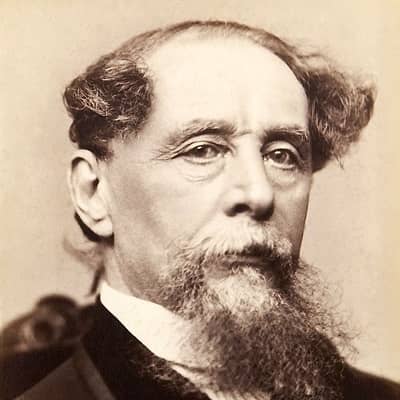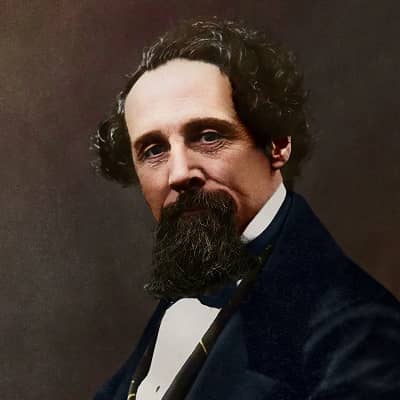Table of Biography
Early Life
Charles Dickens was born on the 7th of February 1812, in Landport, Portsmouth, England. At the age of 58 years old, he passed away and holds British nationality.
Coming from his family background, he is the son of John Dickens (father) and Elizabeth Dickens (mother). Moreover, he was the second of eight children of his parents and grew up in a middle-class family.
Professionally, his father was a clerk in the Navy Pay Office and was temporarily stationed in the district. When Charles was just four years old, his family moved to Sheerness and thence to Chatham, Kent, where he spent his formative years until the age of 11.
Death
Dickens died at the age of 58, on the 9th of June 1870 after suffering from a stroke at Gad’s Hill Place, his country home in Kent, England. He was buried in Poet’s Corner at Westminster Abbey, with thousands of mourners gathering at the beloved author’s gravesite.
Charles Dickens – Early works
Later, the family went to Camden Town, a poor neighborhood in London. Due to his father spending money dangerously beyond the family’s means, the family’s financial situation had grown worse.
As a result, his father was sent to prison for debt in 1824, when Charles was just 12 years old. After that, Charles left school to work at a boot-blacking factory alongside the River Thames.
Working in the factory, he used to earn six shillings a week labeling pots of “blacking,” a substance used to clean fireplaces. Once again his education was pulled out from under him when he was just 15 years old. He dropped out of school in 1927 and worked as an office boy to contribute to his family’s income.
Professional Career
Working as an office boy, it turned out, the job became a launching point for Charles Dickens’s writing career. After working for a year, he began freelance reporting at the law courts of London.
Following that, he reported for two major London newspapers. This man began submitting sketches to various magazines and newspapers under the pseudonym “Boz” in the year 1833. “Sketches by Boz” (1836) his first book which is the form of sketches in periodicals, formed his first collection of pieces and was published in the year 1936.
He published his first novel “The Posthumous Papers of the Pickwick Club.” Although the first few episodes were not successful, the introduction of the Cockney character Sam Weller in the fourth episode (the first to be illustrated by Phiz) marked a sharp climb in its popularity, and its final installment sold 40,000 copies.
Other novels
His other novels series were “Oliver Twist (1837-39),” “Nicholas Nickleby” (1838–39), and “The Old Curiosity Shop” (1840–41). Moreover, his first historical novel, Barnaby Rudge: A Tale of the Riots of ‘Eighty, as part of the Master Humphrey’s Clock series (1840–41), was all published in monthly installments before being made into books.
He along with his wife traveled to the United States in 1842, which led to his controversial American Notes (1842) and is also the basis of some of the episodes in “Martin Chuzzlewit.”
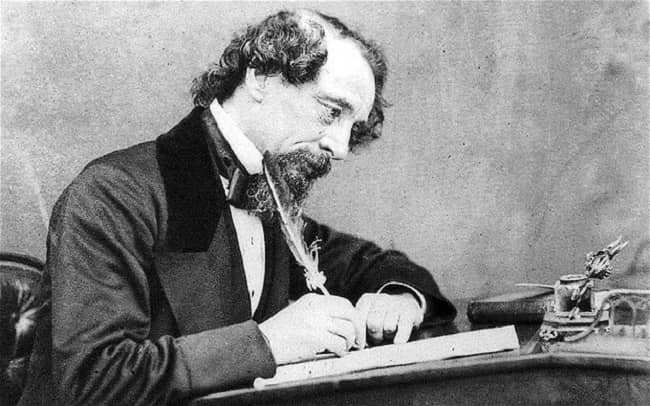
Caption: Charles Dickens writing a novel (Source: Google Sites)
In addition, he released his series of five Christmas Books soon to follow; “A Christmas Carol” (1843), “The Chimes” (1844),” “The Cricket on the Hearth” (1845), “The Battle of Life” (1846), and “The Haunted Man” (1848).
During his living in Italy and Switzerland, he continued his success with “Dombey and Son” (1848), the largely autobiographical “David Copperfield” (1849-50), “Bleak House” (1852-53), “Hard Times” (1854), “Little Dorrit” (1857), “A Tale of Two Cities” (1859), and “Great Expectations” (1861).
Establishing the weekly publication “All the Year Round”
In the late 1950s, he began giving professional readings. Moreover, the readings were a mix of oratory and passionate acting. They were very successful and popular, and Dickens continued to give them throughout his life. He established the weekly publication All the Year Round.
It’s first was printed in April of 1859 and published in the serialization of novels. For it, he worked as an editor and publisher. “A Tale of Two Cities,” is the first novel serialized in All the Year Round. In 1860, the publication of “Great Expectations” started which was also serialized in All the Year Round.
Accident and the last years of his life
Dickens, Ellen Ternan, and her mother were involved in the Staplehurst railway accident in June of 1865. However, Dickens was unharmed in the accident and helped those who were injured.
Moreover, he came back into the wrecked train one last time to retrieve the latest installment of “Our Mutual Friend,” the novel he was writing at the time. Additionally, it would be the last novel he ever completed. In 1867, he returned to America for an extensive reading tour.
He was advised by the doctor, not to give further public readings in 1869. At Gad’s Hil Place in October 1869, he began working on ” The Mystery of Edwin Drood” which would never be finished. In the March of 1870, he arranged a farewell tour and gave his last reading.
Awards
This writer has not won any awards but his writings and lectures caused him to become one of the most popular and well-paid celebrities of his era.
Charles Dickens – Net Worth 2023
According to the great website Global Financial Data, Charles Dickens’s net worth was £93,000 when he died in 1870.
Personal life
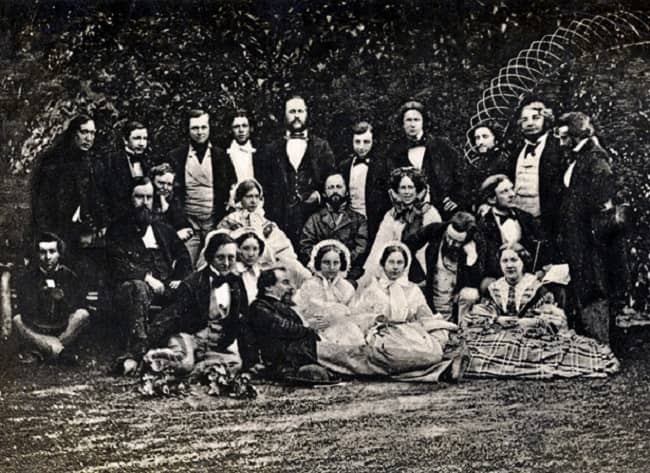
Caption: Charles with his family (Source: Google Sites)
Talking about his relationship, Charles Dickens was in a relationship with an English actress, Ellen Ternan till the time of his death. They were in a relationship from 1857 to 1870. Before having a relationship with Ternan, he was a married man. In April 1936, he married Catherine Hogarth.
With the marriage, the couple has 10 children; Charles Dickens Jr., Mary Dickens, Kate Perugini, Walter Landor Dickens, Francis Dickens, Alfred D’Orsay Tennyson Dickens, Sydney Smith Haldimand Dickens, Henry Fielding Dickens, Dora Annie Dickens, and Edward Dickens. Moreover, the couple divorced in 1858.
Body Measurements and Social Media
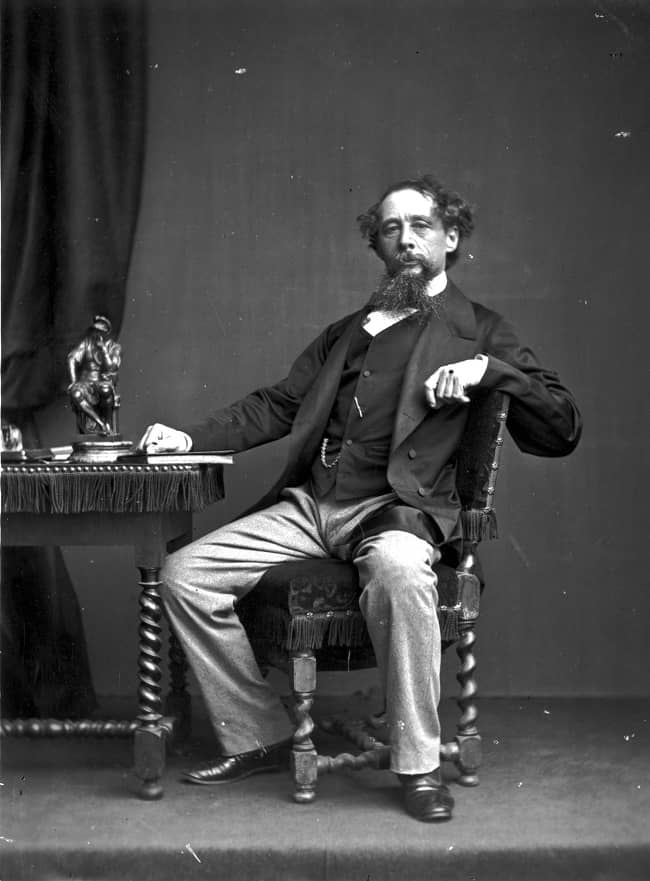
Caption: Charles posing for a photo (Source: The New York Times)
Following his body stats, there is no exact information regarding his height, weight, dress size, shoe size, hair, and eye color. Similarly, during his time, there was no development of means of communication. The only means of communicating was letter and newspapers.


